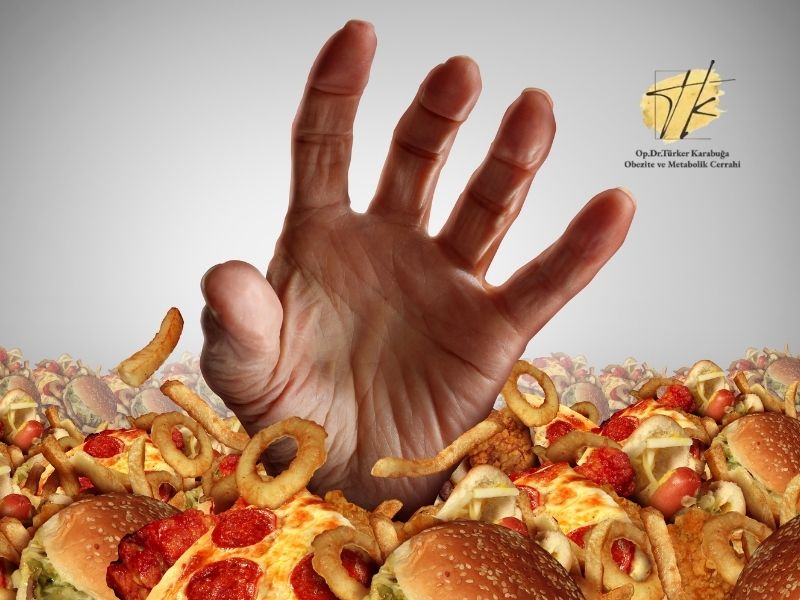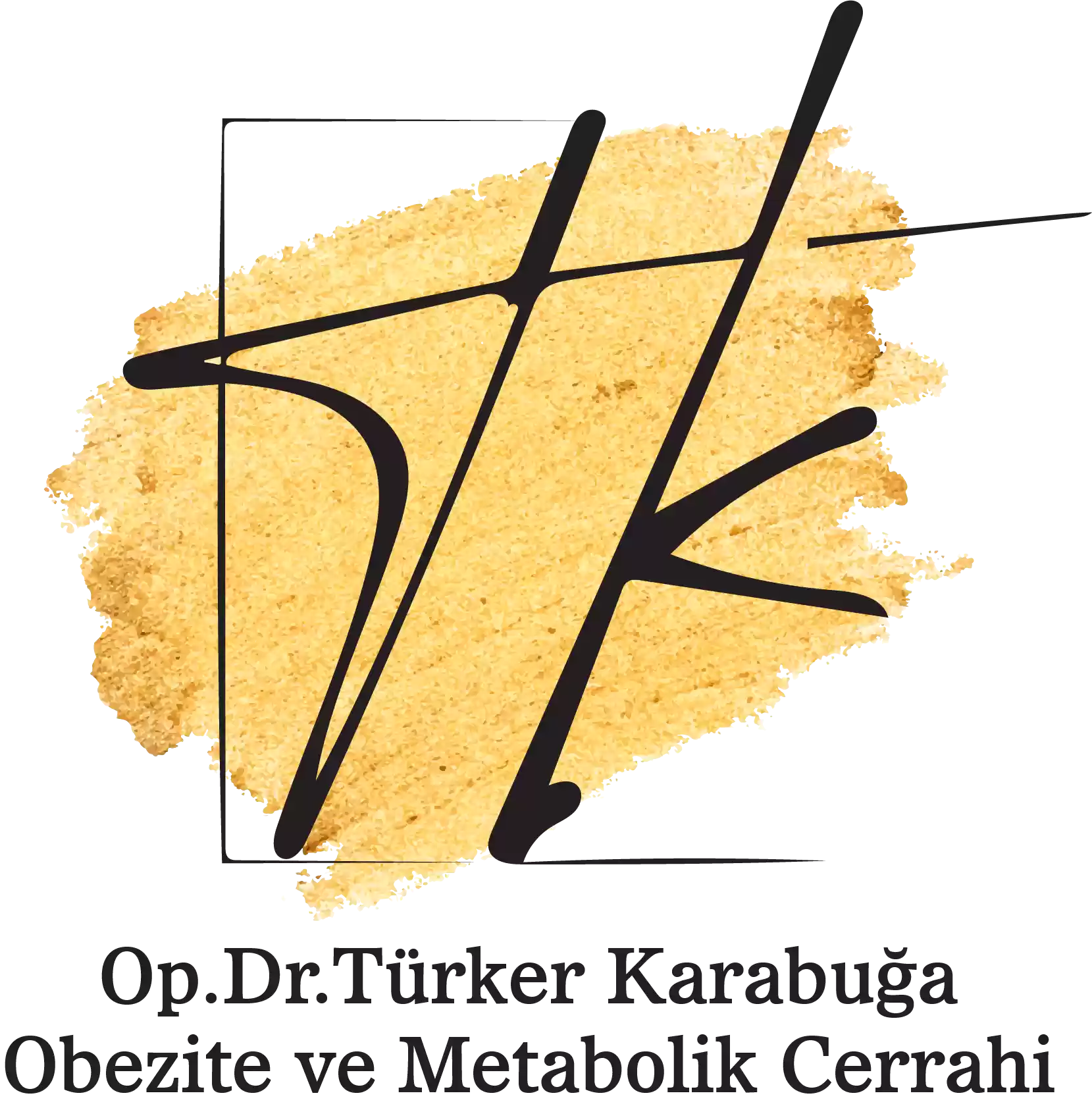Obesity surgery is applied for individuals who cannot achieve success in weight loss with diet and exercise. The success of weight loss comes from a healthy and permanent way of doing it. It will be more efficient for obese individuals who cannot lose weight permanently in natural ways to apply to bariatric surgery, which is called bariatric surgery.
In Obesity Surgery; There are methods that restrict the volume by reducing the capacity of the stomach, restrict the absorption by interfering with the intestines, and both are done at the same time.
Obesity, defined as a body mass index of 30 kg/m2 or more, is a chronic disease seen in children, adolescents and adults worldwide. While it brings many health problems such as cardiovascular diseases and metabolic syndrome, it reduces the quality of life of individuals.
Who Is Obesity Surgery Suitable For?
Those with a Body Mass Index (BMI) of 40 and above (morbid obesity),
Those who have a Body Mass Index (BMI) between 35-40 and have a health problem such as obesity-related diabetes, sleep apnea,
It is suitable for obese patients with a Body Mass Index (BMI) between 30-35 and those who have serious health problems due to obesity and whose living standards are affected by their excess weight.
Even for patients who meet the above criteria, the type of operation and its necessity are decided together with the patient in line with the recommendations of the surgeon who will perform the operation.
What are the Types of Surgery Applied in the Treatment of Obesity?
With the changing and developing technology, diversity is increasing in the medical world, and individual treatment options are emerging. Types of surgery applied in the treatment of obesity;
What is Laparoscopic Obesity Surgery?
Thanks to the opportunities offered by modern medicine, many operations are performed much faster, safer and more comfortably today. In laparoscopy, which is one of the techniques that enables this; Thanks to the laparoscope, which is inserted into the body through the incision in the abdomen, the physician obtains a comfortable view during the operation. Thanks to the incisions made in different parts of the abdomen, other surgical instruments are inserted into the operation area and the surgeon monitors his movements on a high-resolution monitor. Many different diseases can be diagnosed and treated with laparoscopic surgery, also known as minimally invasive surgery or bloodless surgery.
The incision area needed in laparoscopic surgery is 0.5 to 1 cm. is in the range. Therefore, the person feels less pain after the surgery. In addition, adhesions that develop in organs and tissues after open surgeries are also minimal. An optical device called a laparoscope is inserted through the incision in the abdomen. In this way, the surgeon can easily see the relevant area through the monitor.
If there is a situation that needs intervention, 2 or 3 different incisions are made in different regions in the abdomen and trocar tubes are placed in these areas. Assistive hand tools used during laparoscopic surgery are inserted through these tubes. Thus, the physician can operate the patient effectively. In laparoscopic surgery, which provides a wider field of view than open surgeries, the small incision scars reduce the common complications such as adhesions and wound hernia. In addition, the scars are so small that they do not disturb the person in terms of aesthetics.
No matter how big the operation is in laparoscopic surgery, the complaints such as pain and pain felt by the patient after the operation are much less than in open surgeries. Thanks to this method, which allows the patient to recover quickly by using less medication, many different surgeries can be performed.

1. Sleeve Gastrectomy:
Sleeve Gastrectomy, also called sleeve gastrectomy, is a surgical operation for weight loss. It is one of the most frequently applied bariatric surgery procedures. The operation generally reduces the volume of the stomach, restricting the food intake, and thus provides weight loss with reduced calorie intake. An incision and suture is applied laparoscopically (closed) starting from the region of the stomach called the antrum, extending along the staple line ending at the proximal sense angle. Approximately 80% of the stomach (which may vary depending on its size) is removed. The stomach that remains after the operation is likened to a tube because there is no dome, and for this reason, although it is called sleeve gastrectomy in medicine, it is popularly referred to as Tube Stomach Operation.
Apart from getting rid of excess weight, sleeve gastrectomy can also contribute to the improvement of the following conditions due to excess weight:
- Heart disease
- Hypertension
- high cholesterol
- obstructive sleep apnea
- type 2 diabetes
- Stroke
- Infertility
2. Gastric Band (Gastric Band-Stomach clamp):
Gastric band (laparoscopic gastric band) surgery; It is an operation in the form of passing a silicone ring around the neck of the stomach. It is also known as gastric banding. The band is a silicone material like a thin long finger, one centimeter wide, 10 centimeters long, carrying an inflatable balloon along its inner surface when necessary. In the surgery, the band, which is inserted into the abdomen in an open flat manner, is tied around the stomach tissue a few centimeters below the esophagus-stomach junction and tied in a belt style.
By forming a node in the stomach, an upper stomach chamber as large as a walnut is formed. When the food comes to the stomach, it first fills the upper stomach chamber as large as a walnut. Food can only pass through gradually, as the annular band partially chokes the passage. This situation slows down the rate of eating and causes a feeling of satiety quickly, thus providing weight loss.
3. Mini Gastric By-pass:
Laparoscopic Mini-Gastric Bypass is a popular and frequently preferred type of bariatric surgery (obesity surgery). It has both a restrictive effect on stomach volume and a malabsorptive effect that reduces absorption from a part of the small intestine. It is applied in a closed (laparoscopic) way.
4. Transit Bipartition:
Transit Bipartition is an effective metabolic obesity surgery method in the treatment of Type 2 Diabetes. This treatment method has both a restrictive effect on stomach volume and a malabsorptive effect that reduces absorption from a part of the small intestines. First, a tube stomach is created that is wider than sleeve gastrectomy, and then the last 1/3 of the small intestine is connected to the stomach as an alternative, thus the duodenum (on two finger intestines) is disabled. Thus, as the food intake decreases, the absorption decreases, and as the absorption decreases, the glucose that enters the blood decreases.
In addition, let's not forget that not every diabetes patient is suitable for this operation, it is an operation that is decided only in cooperation with the surgeon and the patient.
5. Duodenal Switch (Biliopancreatic Diversion):
With this method, the lower part of the stomach is removed, and the duodenum, which is the first place the food reaches after leaving the stomach, is closed to the food entrance. The small intestines are separated and the 50 cm section before connecting to the large intestine is marked. By counting another 150 cm, the small intestine is cut at 200 cm from the junction of the small intestines with the large intestine. The cut lower end is connected to the stomach. The upper end is connected to the previously marked 50th cm. In this way, all areas of the small intestine, except the last 200 cm, are disabled.
Food exit from the stomach will now occur from this new intestinal segment instead of the duodenum. The other end of the small intestine is joined where the food meets the bile and pancreatic enzymes. This length can be changed to adjust the degree of absorption. After the operation, the foods that the patients eat do not enter the first part of the small intestine called the duodenum and jejunum.
It is known that these surgeries cause great improvements in diabetes as well as obesity.
Patients lose about 80% of their excess weight after surgery. Thanks to both the breaking of the sugar resistance hormone and the fact that the hormones against the sugar resistance hormone around the duodenum no longer meet with meals, blood sugar is regulated to a large extent. The long-term success rate in obese patients is over 90%.

6. Ileal Interposition:
The term ileal interposition is the process of replacing the last part of the small intestine with the initial part. This surgery works on the principle of deactivating the hormones that cause insulin resistance and raising the hormone levels that increase insulin sensitivity.
In addition to the displacement of the small intestine in ileal interposition surgery, the removal of the fundus region of the stomach, especially in Type 2 Diabetes, excessively increased ghrelin hormone levels decrease to very low levels. In this way, our patients do not feel much hunger even if they do not eat for a long time in the postoperative period.
The aim is to reduce the secretion of the ghrelin hormone, which triggers the feeling of hunger, and to prevent the "gastric dilatation" state, which may occur due to the displacement in the intestine and progress with persistent nausea and vomiting. Therefore, in Ileal Interposition surgery, a larger stomach is left than the "tube stomach" surgery performed as a morbid obesity surgery. The reason why patients eat less is the hormonally created new regulation. For these reasons, although Ileal Interposition surgery is an anatomically advanced digestive system surgery, it is a "Metabolic Surgery" procedure in terms of its mechanisms of action.
Each step applied in ileal interposition surgery has a hormonal target. These goals are evaluated for each patient, taking into account many factors and, if necessary, changes are made according to the patient's condition. In this sense, Ileal Interposition is a dynamic decision-making process.
What is Robotic Obesity Surgery?
Robotic Surgery is an important technology that is rapidly developing and promising today. Operations performed with robotic arms under the guidance of surgeons are currently used in operations that require minor intervention, and time and studies are still needed for their use to become widespread.
In studies on Bariatric and Metabolic Surgery; When robotic surgery and traditional methods are compared, there is no significant difference in terms of hospital stay and postoperative period, but clearer and higher resolution images can be obtained in robotic surgery. Still, more studies on robotic surgery are needed.
Nutrition Before Obesity Surgery
After Obesity Surgery or Metabolic Surgery, the patient is expected to make radical changes in nutritional habits and food choices in order to achieve successful results. One of the factors that increase the success and adaptation after surgery is the healthy diet applied before the operation. Although it varies according to the type of operation the patient will undergo, the weight of the patient and the surgeon's opinion; It reduces the risks that may occur during the laparoscopic operation by reducing the intra-abdominal and liver volume, as well as improving the adaptation of the patient's carbohydrate and fat-restricted, high-protein diet, which is started at least 2 weeks before the operation, during the postoperative period.
Protein-based nutrition lists of the patients until the day before the operation;
- lean parts of red meat/white meat/fish
- legumes (lentils, chickpeas, beans..)
- milk and dairy products (yogurt, kefir, ayran, milk..)
- egg
- protein powders and supplements as needed
Nutrition After Obesity Surgery
In the post-operative period, adequate energy and nutrient intake is important to support weight loss and tissue healing. In addition, while the consumed foods support weight loss, the patient should minimize the occurrence of reflux, heartburn, nausea, early satiety and dumping syndrome that may occur after obesity surgery.
Dietary phases (clear liquid, liquid, puree, soft and solid), protein intake, fluid requirements and vitamin mineral supplementation are among the priority requirements in the nutrition of postoperative obesity surgery patients. A low-sugar clear liquid diet can usually be started within 24 hours of any bariatric surgery. However, the progress of this diet and nutritional procedure should be evaluated by the doctor and dietitian. The protein requirement of the patient is individual and should be planned by the dietitian according to gender, height and age. It is recommended that the patient take an average of 60-80 g of protein or 1-1.5 g/kg of protein during the day.
Clear liquid diet (post-operative day 2): It is used as the first step in nutrition after obesity surgery. According to the results of the leak test performed 24-48 hours after the operation, with the approval of the surgeon performing the operation, the patient starts to be fed with sugar-free or low-sugar clear liquids (apple juice, diluted buttermilk, meat/chicken broth...) and water. Fluids in a clear liquid diet should be at body temperature and have minimal gastrointestinal residue.
Liquid Diet (post-operative Days 3-12): The liquid diet is more textured and has a higher gastric residue than the clear liquid diet. During this period, more viscous liquids such as milk and dairy products, supplementary protein powders can be started, while care should be taken to ensure that all liquids are homogeneous and free of grains. For this purpose, it is important to consume granular, lumpy liquids after they have been thoroughly filtered through a tight cheesecloth.
Liquids that can be used in the liquid period;
- protein powder
- lactose-free milk
- Plant-based milks such as soy milk, almond milk
- Diluted buttermilk made with lactose-free yogurt
- diluted kefir
- Meat/chicken stock (clear soups made from meat/chicken stock)
- yogurt juice
- Whey
- Reconstituted unsweetened, organic fruit juices (should not be acidic)
- Decaffeinated herbal teas such as linden
Fine Puree Diet (post-operative days 13-22): In this period, the foods should be blenderized and have the consistency of baby food-boza. Consumed foods should not contain foods that can increase stomach acid such as spices, onions, tomato paste. Protein intake should be at the forefront, but in addition to protein, fruit or vegetable purees can be added. During this period, the patient should begin to practice solid-liquid separation and should maintain the rule for life.
In addition to the liquid period, the foods that can be consumed during this period are;
- Cheese
- Egg
- Yogurt (home yoghurt, strained yoghurt or probiotic yoghurt)
- Boiled vegetable purees
- fruit purees
- Double minced meat
Puree period (23-32 days): In the puree period, which consists of more viscous foods compared to the fine puree period, it will be sufficient in terms of consistency to mash the foods with the back of a fork without the need to pass the leftover food through the blender. Although the consistency of the food increases, it is also important for the patient to chew the food thoroughly and to consume it by waiting between small bites and bites in terms of improving gastric tolerance. Consumed foods should not contain foods that can increase stomach acid such as spices, onions, tomato paste.
In addition to the fine mash period, the foods that can be consumed during this period are;
- Soft-fleshed fish such as grilled/steamed fish or tuna
- Mince
- chicken legs
- Unpeeled raw cucumber
- Curd cheese
Solid nutrition (1st month and later):
After the 30th day, in line with healthy nutrition recommendations, the consumption of raw vegetables and other solid foods is encouraged and planning is made depending on the tolerability of the patient. Follow the nutrition list planned according to the patient's daily protein needs.
Mu is also important in terms of the course of weight loss and adapting to the process without experiencing problems such as reflux, heartburn, and dumping.

Why is solid-liquid separation important after obesity surgery?
One of the most important rules to be followed after sleeve gastrectomy and other bariatric surgeries is solid-liquid separation. The main basis of this rule is to avoid liquid intake 30 minutes before, after and during meals in solid form.
The reason why we do not want to take liquid before meals is that we cannot get enough protein during the meal with the stomach filled with liquid. In addition, the solid that encounters the liquid in the stomach cannot find enough volume, causing the patient to come back, that is, to experience nausea and vomiting. Muscle loss and mineral-vitamin deficiencies are seen in patients who take insufficient protein, which is a situation we do not want in the weight loss process.
The disadvantages of taking fluids during and after meals are the risk of dumping syndrome and stomach enlargement. The solid foods that are eaten are digested in the stomach and absorbed by passing into the small intestines, although it takes about 3 hours, depending on the consistency of the food. Since the liquid consumed during and after the meal will soften the form of this solid and pass from the stomach pouch to the small intestines before the digestion is finished, it can both reduce absorption and cause dumping syndrome.
Another reason is stomach enlargement. The stomach will expand when liquid is sent to the stomach, which is already small and completely filled with edible solids. Continuing these habits can lead to increased calorie intake and weight gain, along with stomach enlargement.
How Much Weight Will I Lose With Obesity Surgery?
Obesity Although the weight loss processes of patients undergoing surgery vary according to various factors such as the patient's initial weight, gender, age, comorbidities and metabolic rate; It is expected that the patient will lose approximately 10% of his initial weight in the first month after the operation. Within a year, the patient loses 80-95% of their excess weight and reaches their ideal weight.
How Effective is Obesity Surgery?
Obesity surgery is aimed at reducing and eliminating obesity and the health problems it brings with it. The patient loses weight and quality of life improves. Many bariatric surgeries reduce stomach volume. In this way, patients feel full with less food and consume fewer calories. This helps patients lose weight and keep their weight under control. Other bariatric surgeries also reduce the absorption of food. In this way, fewer calories are consumed and weight is lost. This is how bariatric surgery shows its effects.
Does Obesity Surgery Take Long?
The duration of bariatric surgery may vary depending on the surgical procedure and the general health status of the patient. However, these surgeries usually take between 45 minutes-3 hours. For example, stomach reduction surgeries usually take 45 minutes, while gastric bypass or duodenal switch surgery, which are more complex surgeries, can take 2 to 3 hours. Hospitalization and recovery processes after bariatric surgery may also vary depending on the patient's condition.
Things to Consider Before Obesity Surgery
Things to be considered before obesity surgery are important for the surgery to be successful and to reduce the risks. Before obesity surgery, it is necessary to pay attention to a healthy diet, exercise, reduce smoking and alcohol intake and be psychologically prepared for the surgery. Before the surgery, you need to be in contact with your doctor and prepare your body for the surgery.
Things to Consider After Obesity Surgery
There are some important points to be considered after obesity surgery. The most important of these is nutrition after surgery. In accordance with the doctor's recommendations, a slow transition to liquid, pureed and then solid foods should be made. It is necessary to eat healthy and avoid harmful foods. Exercising after surgery helps the weight loss process and increases muscle mass. Water consumption should not be ignored. You can get psychological support after obesity surgery.
How Long Does It Take to Lose Weight After Obesity Surgery?
After bariatric surgery, each patient's weight loss rate varies depending on factors such as initial weight, comorbidities and age that affect the metabolic rate.
But approximately
10% of their starting weight in the first month,
10% of their initial weight between months 1-3
About 10% of their initial weight between 3-6 months
Between 6 months and 1 year, they are expected to lose 1o% of their initial weight and reach or approach their ideal weight.
For example, a patient entering surgery with 100 kg,
-10 in 1 month
-10 between months 1-3
-10 between 3-6 months
Between 6th month and 1st year, the patient loses -10 kg and reaches 60 kg within 1 year.

When Can I Return to Work After Obesity Surgery?
Adaptation to social life and business life after bariatric surgery is faster than expected. If the patient is dealing with a desk job, he/she can start working within 1 week, especially if he/she is dealing with a heavy job that requires weight lifting, he/she can start working within about 1 month with the knowledge of the surgeon who performed the operation.
Is there a risk of weight regain after bariatric surgery?
Like every hollow organ, our stomach is an organ that can expand. For this reason, the stomach may expand again after bariatric surgery. However, if the patient follows the rules such as solid-liquid separation, consuming foods in sufficient portions and slowly, and avoiding carbonated/acidic drinks, it is not possible for the stomach to return to its former form.
What are the Risks of Obesity Surgery?
The risks of obesity surgery may carry some risks like any surgical operation. It may include complications such as bleeding and infection. Depending on the techniques developed in recent years and the experience of the doctor, the risks have decreased considerably. Among the risks of obesity surgery is the possibility of stomach ulcers. It can be solved with appropriate nutrition and medication. Your doctor will definitely inform you about the risks of obesity surgery before surgery.
Is Obesity Surgery a Dangerous Procedure?
Obesity surgery can be as dangerous as many other surgical operations. This danger has been minimized with developing techniques and experience. The dangers and risks of bariatric surgery can be avoided by performing the surgery carefully. The fact that the surgery is managed by expert surgeons, the equipment used is appropriate, the patient is taken care of by providing the right information before and after the surgery, and the patient follows the doctor's recommendations will save bariatric surgery from being a dangerous procedure.
Are There Side Effects of Obesity Surgery?
Obesity surgery may have some side effects. These side effects vary depending on the lifestyle and diet of the person after bariatric surgery. Fatigue, stress and sleep problems can be seen after bariatric surgery. In addition, side effects such as nausea and vomiting, anemia or iron deficiency, abdominal pain, gas, bloating can be seen.
How is Patient Follow-up After Obesity Surgery?
Patient follow-up after bariatric surgery is performed by the surgeon and other health professionals. It is necessary to monitor the patient's recovery after surgery, provide counseling on diet and lifestyle changes, and monitor possible side effects. Patient follow-up is performed at regular intervals during the first year after surgery and continues less frequently in the following years. During this follow-up, blood tests can be performed and the patient's lifestyle is examined.
Obesity Surgery Prices 2024
Prices for bariatric surgery may vary depending on the needs of the patient, the type of surgery to be performed, the experience of the doctor and the newness of the equipment. You can get information about obesity surgery prices from your doctor or hospital.








